Heart Matters – April 2023

VAD Team Quietly Offers a Lifeline to Advanced Heart Failure Patients
The Washington University and Barnes-Jewish Hospital Heart and Vascular Center celebrates its VAD program’s 25th anniversary, maintaining the same goal — offering advanced heart failure patients a chance at a longer, better life.
Across its 25 years, the program has implanted more than 1,100 VADs in patients, placing it among the top 10 programs in volume in the U.S.
The program’s one-year VAD survival rate is comparable to the one-year heart transplant survival rate. Currently, median survival time for patients with the current VAD being used is more than 5 years. Our center’s longest-surviving patient is currently in their 12th year of VAD destination therapy.
“Our center has been successful thanks to a large group of experienced individuals including cardiologists, cardiac surgeons, nurses, and support staff working together with the goal of helping patients with end stage disease and limited options,” says Washington University advanced heart failure specialist Justin Hartupee, MD, PhD. “VADs have continued to improve over time and offer hope for prolonged survival and dramatically improved quality of life to our patients.”
CHANGING TECHNOLOGY
The tick-tick-tick was a dead giveaway.
In the late 1990s, you could tell you were near a ventricular assist device (VAD) patient because you could hear the device clicking inside them, pumping blood through their body. You could also spot the bulky battery pack slung over their shoulder in a canvas bag.
VAD technology was much different when the Washington University and Barnes-Jewish Hospital VAD program started in 1997.
“Initially patients remained hospitalized due to the complexities of the pump, the frequent, required monitoring and size of the equipment,” Christine Huber, VAD coordinator says.
Eventually, pumps became smaller, taking up less space in the chest and allowing for less-invasive surgical approaches. The external controller and batteries also shrunk, while battery life grew. The Washington University and Barnes-Jewish Heart and Vascular Center took part in multiple international clinical trials that helped advance VAD technology. The result of these trials are current devices that are smaller and easier to implant, are more durable with significantly improved safety profiles and battery life. These advances result in improved outcomes and quality of life for VAD recipients.
“This allows the patient to be more mobile for extended periods of time,” Huber says.
Vests, jackets and T-shirts, all customized to fit VAD equipment, has helped patients keep their equipment secure and discrete.
“All of these advancements help with the transition from hospital to home after a life-changing surgery,” says Huber. “Now patients can return to their communities and resume their lives.”
A TEAM APPROACH
Since the beginning, the VAD program has taken a team approach to patient care.
Patients are evaluated and followed by a large team under medical director Greg Ewald, MD, who has been with the VAD program since its inception. The multidisciplinary team includes cardiologists, cardiothoracic surgeons, nurse coordinators, social workers, dieticians, pharmacists, financial specialists and palliative care/hospice services.
“Each patient is assigned to a specific nurse coordinator, which promotes the development of a strong patient-provider relationship and allows us to know the intricacies of our patients and their health, while giving them a partner in care that they can trust and use as a resource,” says Huber.
Coordinators help patients manage their medications, schedule tests and procedures and coordinate with patients’ primary care providers and specialists.
In addition, VAD social worker Mary Beth Fernandez, LCSW, provides psychosocial support to patients and runs the monthly support group where VAD patients can share their successes, discuss new ideas, troubleshoot problems and encourage each other. The group has met virtually since the start of the pandemic.
While celebrating the lives saved and improved throughout the 25 years of the program, the Washington University and Barnes-Jewish Heart and Vascular Center VAD team knows that the program also has deep experience in providing superior patient care to continue as a leader in its field into the future.
New Appointments to Interventional and Structural Cardiology Section

The scope of interventional and structural cardiology has expanded rapidly over the past few years, with broad implications for patient care, training, and clinical research. To reflect these changes and be better equipped to meet dynamic present and future needs, the Cardiology Division is restructuring the section of Interventional and Structural Cardiology; this entails several new roles for division faculty.
Dr. Jasvindar Singh will serve as the inaugural Section Head of Interventional and Structural Cardiology. Dr. Singh is an international leader in interventional cardiology and has contributed extensively to fellow procedural training in multiple venues.
Dr. Alan Zajarias will serve as Director of the Structural Heart Disease Program within the Section. Dr. Zajarias has distinguished himself as a national leader in structural interventions and valvular heart disease, and along with Dr. John Lasala, has elevated the profile of Wash U structural cardiology.
Dr. Howard Kurz will continue in his role as Medical Director of the BJH Adult Cardiac Catheterization Laboratory and Director of the Interventional Cardiology Fellowship Program. Working alongside Dr. Kurz, Dr. Marc Sintek will be appointed Associate Director of the Adult Cardiac Catheterization Laboratory. Dr. Prashanth Thakker will be the APD for the Interventional Cardiology Fellowship Program.
Congratulations to all in their new leadership roles!
Cardiovascular Division Recognized for 20 Years of Excellence in Echocardiography

By achieving IAC Echocardiography accreditation for 20 years, Barnes Jewish Hospital at the Washington University School of Medicine has received a Bronze Milestone Recognition for demonstrating its long-term commitment to continuously improving patient outcomes and safety. Every three-year cycle, accredited facilities undergo an intensive application and review process to re-earn accreditation, with an assessment conducted by a panel of medical experts. The IAC accreditation process enables both the critical operational and technical components of the applicant facility to be assessed, including representative case studies and their corresponding final reports.
Echocardiography is used to assess different areas of the heart and can detect heart disease or signs of serious cardiovascular conditions. According to the Centers for Disease Control and Prevention, heart disease is the leading cause of death for men, women and people of most racial and ethnic groups in the United States. On average, one American dies every 34 seconds of cardiovascular disease – disorders of the heart and blood vessels. IAC accreditation assesses the many factors that contribute to an accurate diagnosis based on echocardiography. The training and experience of the sonographer performing the procedure, the type of equipment used and the quality assessment metrics each facility is required to measure, all contribute to a positive patient outcome.
Patients, referring physicians and insurers look for the IAC seal of accreditation as the ‘gold standard’ in the field of echocardiography. Facilities that achieve IAC accreditation demonstrate a clear indicator that they provide a high quality level of patient care.
“We are proud to recognize long-time accredited echocardiography facilities through the new milestone recognition program. Since being incorporated in 1997 as the Intersocietal Commission for the Accreditation of Echocardiography Laboratories (ICAEL), we (now IAC Echocardiography) have helped thousands of facilities standardize their processes to provide better patient care and improved outcomes. As we celebrate 25 years of accrediting echocardiography facilities, the recognized facilities are true champions of accreditation. This recognition is a testament to the hard work and dedication of the staff who have consistently demonstrated their commitment to delivering safe, effective and compassionate care using accreditation as a quality metric. These facilities’ ongoing commitment to quality patient care is an example for other health care providers to follow. It is a reminder of the importance of putting patients first and striving to continuously improve the quality of care provided,” said Mary Lally, MS, CAE, CEO of the IAC.
Dr. Abhinav Diwan Named Chief of Cardiology at VA Medical Center
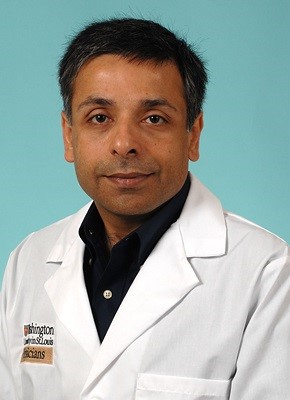
After a national search for a new Division Chief of Cardiology at Saint Louis VA Medical Center and reviewing a deep and impressive group of candidates, the committee has selected Dr. Abhinav Diwan as the new chief of Cardiology.
Dr. Diwan is a well-renowned clinician and physician-scientist. He obtained his medical degree from the All India Institute of Medical Sciences and did his Internal Medicine residency and Cardiology fellowship at Baylor University. He moved to Washington University in 2008, where he has made a spectacular career and now holds the title of Professor of Medicine in Cell Biology and Physiology and Obstetrics and Gynecology. He has served in multiple leadership positions, including the Director of the Echocardiography laboratory at the University of Cincinnati, Associate Program Director for the Investigator Training Track of Cardiology Fellowship at Washington University, and Associate Division Chief of Cardiology at the John Cochran Veterans Affairs Medical Center. He has also received national recognition. His national accolades include being named a Fellow in the American College of Cardiology, a title awarded by peers to only the best in their field, being inducted into the American Society of Clinical Investigation, and being recently elected into the Association of University Cardiologists. This association shapes the course of research and training in cardiovascular disease in this country. Dr. Diwan is an excellent teacher with a superb track record performing basic and translational discovery research with longstanding funding from the NIH and the VA. he is currently the PI on multiple NIH R01 grants, training grants, and VA merit awards, with his research focusing on evaluating the role of lysosome biology in cellular homeostasis in disease states including heart failure, atherosclerosis, Alzheimer’s disease, and diabetes.
Recently, he became the lead investigator of the national VA-SHIELD program, a VA science and health initiative to combat infectious and life-threatening Diseases through the Department of Veterans Affairs. This initiative has enabled the development of better infrastructure to facilitate clinical research within the Cardiology Division at the Saint Louis VA Medical Center.
Nicole Nichols Elected to National Council of University Research Administrators Board of Directors
Congratulations to Cardiovascular Division Senior Research Administrator Nicole Nichols, who won regional election to the national board of the National Council of University Research Administrators (NCURA)!
Nicole was nominated among two other candidates in a region that includes 12 states to serve as representative on the Board of Directors for a two-year term. This is an outstanding achievement and recognition of Nicole as a true leader in her profession.
In Memoriam: Alan J Tiefenbrunn MD
1948-2023
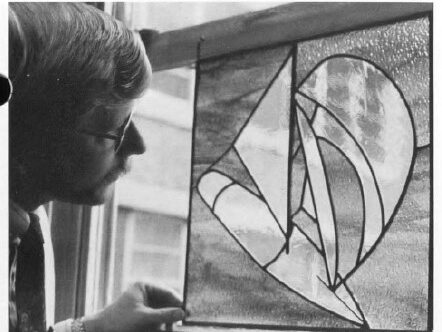
by Philip A Ludbrook MD
Alan J Tiefenbrunn–‘Tief’–as he was affectionately known by all, died at his home in Rancho Santa Fe, California, on Sunday March 19, 2023 at age 74 years from complications of kidney disease, leaving his wife, Sharon Frost Tiefenbrunn MD, and his children, Teresa and Curtis and their families. Tief left a profound legacy of love for his family, friendship, loyalty, service, commitment and achievement extending far beyond all appearances.
Tief received his undergraduate education at Washington University and graduated from Washington University School of Medicine in 1974, followed by Residency at UC San Diego. He then entered the WU Cardiovascular Fellowship just 4 years after the arrival of Burton E Sobel MD as Director of the Cardiovascular Division. Following Fellowship training, Tief was invited to join the faculty of the Cardiovascular Division with predominant commitment to the rapidly expanding Cardiac Catheterization program, and enjoyed a long, highly successful career as an academic Invasive Cardiologist, clinical investigator, and teacher—many generations of cardiologists are the beneficiaries of his astute instruction. Tief’s exceptional dexterity, technical skills and talent for management led to his appointment as Associate Director of the Cath Lab, a position he held for more than 14 years. (As an aside, that same finesse for delicate handwork was manifest in his exquisite stained glass artistry—his brilliant fire-breathing red Chinese dragon masterpiece still hangs in my window!). Concomitant with his major clinical and teaching responsibilities, his widely recognized research achievements centered particularly on thrombolytic therapy, his editorial contributions, and his increasingly visible achievements in clinical research and advocacy for thrombolytic therapy, Tief progressively rose through the academic ranks to full Professorship in the Department of Medicine.
Even while shouldering a large share of the daily case-load in the Cath Lab, Tief’s research interests blossomed with the outcome of Dr Sobel’s prescient collaboration with Professor Désiré Collen, University of Louven, who elaborated melanoma-derived Tissue Plasminogen Activator (mt-PA) and posited it as a clot-selective thrombolytic agent. Tief and I performed the first thrombolytic intervention using mt-PA in a patient with acute myocardial infarction, successfully achieving prompt coronary reperfusion. In a collaborative study with Dr Collen’s group, five additional patients with acute infarction were treated with mt-PA, achieving thrombolysis in 4 of the 5. With this encouraging foundation, we participated in a series of NHLBI-funded clinical trials of recombinant t-PA (rt-PA) in patients with myocardial infarction (TIMI Trials) which established the therapeutic paradigm of thrombolytic therapy in patients with acute heart attacks.
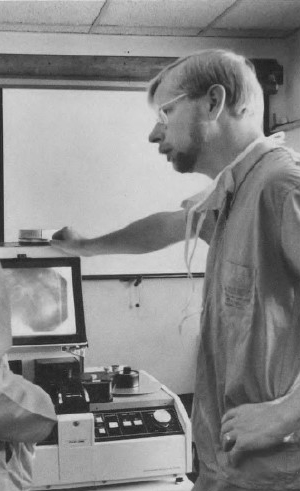
From his personal hands-on leadership experience in the rapidly growing field of thrombolytic therapy using rt-PA, as well as his organizational role in the concomitant National Registry of Myocardial Infarction study, Tief became the author or co-author of more than 60 papers on the subject of thrombolytic therapy published in prominent medical journals, and became recognized nationally and internationally as a sought-after Visiting Professor, presenting more than 15 international and 30 national invited Lectureships and Professorships.
Tief enjoyed people, and flourished in the camaraderie of the cath lab where he spent most of his service time. He was a friend to those with whom he worked, an interested listener, and an engaging conversationalist–often spiced with his contagious sense of humor. His staunch loyalty and commitment to the best interests of his patients, friends, colleagues, the Cardiovascular Division and most especially to his wife and family were always his foremost concern.
Tief was a unique, gifted, personable gentleman with whom it was a pleasure and privilege to work throughout his 35 years of service to the Cardiovascular Division. In his own unpretentious way, he contributed much—seen and unseen—to his patients, to new medical knowledge and practice, and to the success of the Cardiovascular Division.
He is missed. May he rest in peace.
Remembering Donna Whitehead
by Jean Flanagan

Our beloved colleague, Donna Whitehead, passed away Tuesday February 28, 2023 surrounded by her husband, Jerry, and their 3 daughters. Donna was a dedicated cardiology nurse for 32 years. After graduating from Barnes School of Nursing in 1991, Donna starting her career working in the Cardiac Medicine ICU at Barnes Hospital. She moved to Utah in 1993 and after a few other nursing positions, she found her way back to the CCU at Barnes, She worked 8 years in the CCU and then became a Heart Failure Research Nurse Coordinator at Washington University School of Medicine where she spent the last 13 years of her nursing career.
Donna, or “Shorty” as some people fondly called her, was a dedicated and committed nurse. No matter where she was practicing, she exemplified the ideals of the nursing profession perfectly. She was conscientious, caring and determined. Donna knew how to connect with patients and their families, always taking time to explain things, share a supportive word or remember a personal detail. She was also very organized, diligent and always ready to collaborate with or assist her co-workers.

However, her exemplary skills were not the only reason we loved working with her. Donna was a lot of fun and had a smile that lit up the room. No matter the circumstance she always had a positive attitude. She treasured her friendships, family, and faith and was best known for making people feel welcomed, valued, and loved.
The combination of all these attributes made for the best sort of coworker and friend. She has truly made a difference in the lives of her patients, co-workers, family and friends, and will be forever loved and remembered by our group, and beyond.
Way to Shine!
“I would like to give a WAY TO SHINE to Nikki Depew for working countless hours organizing the Team Development day, the PowerPoint Presentation, and the training manual for the Division of Cardiology. This will aid in new hire trainings, cross training, and serve as an overall great source for general references.”
Other Way to Shine’s for this month were Lizzie Tullis, Joseph Gavin, Jenny Weimer, Cynthia Ousley, and Shalatha Malone.
If you catch someone in the act of shining, contact or send an email to bolhafner@wustl.edu.
CCR Spotlight: Diwan Lab

Each month, Heart Matters will highlight a research lab or clinical program. We want everyone in the division to be proud of the work we do across all of our locations and disciplines.
The Diwan Lab, in the Center for Cardiovascular Research, is dedicated to the study of lysosomes, and seeks to understand how these cell parts can be targeted by therapies to treat and prevent cardiovascular diseases, diabetes, Alzheimer’s disease and more.
Lysosomes are organelles, parts within cells that serve several biological functions. The Diwan Lab has done extensive research on lysosome dysfunction and how it contributes to myocardial infarction, heart failure and cardio-metabolic diseases. The lab has identified acquired lysosome dysfunction as a shared mechanism between these conditions and other aging-induced pathologies such as Alzheimer’s disease and Type 2 diabetes, offering hope to develop treatments to target them simultaneously.
The lab is led by Dr. Abhinav Diwan, Professor of Medicine, Cell Biology and Physiology, and Obstetrics and Gynecology. Dr. Diwan is passionate about his work, and supporting his team. Current lab members include cardiovascular division faculty Dr. Xiucui Ma and Dr. David Rawnsley, senior scientist Dr. John Murphy, postdoctoral researcher Dr. Minu Kumari, PhD student Moydul Islam, and research assistant Chen Zhao. Dr. Diwan also co-mentors post-doctoral researchers, Dr. Adelita Mendoza with Dr. Kerry Kornfeld and Dr. Kenji Rowell Lim with Dr. Douglas Mann. The Diwan and Mann labs have recently merged to boost their collaborative efforts, spurring novel areas of discovery and offering further opportunities for trainees.
Studies published by the Diwan Lab have had far-reaching impacts. A CNN article published in 2018 highlighted findings that intermittent fasting can reduce insulin dependence in people with Type 2 diabetes. A study showing that mothers can pass on risk of heart problems to their children when they eat a high fat diet was also widely reported on. In 2019, the lab published results of a study that found a key way to protect against heart failure in people who had experienced heart attacks.
In recent years, Dr. Diwan has also focused on Covid-19 research. Through his work at the VA hospital, where he was recently promoted to Chief of Cardiology, Dr. Diwan has taken a leadership role in mitigating the devastating effects of the novel coronavirus in the veteran population and studying cardio-metabolic complications of Long Covid. The lab’s work led to a report that showed men, and particularly men with low testosterone levels, are at higher risk for severe Covid outcomes.
Dr. Xiucui Ma recently joined the cardiovascular division in February, and is enthusiastic about her opportunities in the Diwan Lab. She specializes in the study of autophagy in cell function, and how it contributes to heart failure. The possibilities of improving therapies for diseases based on discovering the way cells function in the body is what drives Dr. Ma’s work.
Postdoc researcher Dr. Miru Kumari has been in the Diwan Lab since April of 2020. She is inspired by being a part of the lab’s research team and says “uncovering the unexplored things” is one of her favorite things about her work. Dr. Kumari says that Dr. Diwan is a wonderful and supportive mentor who deeply values his team and helps them grow. She wants to pursue independent grants and research, and eventually have her own lab focusing on cardio-metabolic disease.
Moydul Islam is a 5th year PhD student in the Department of Chemistry, who joined the lab in spring 2019. He says that the Diwan Lab’s work speaks to him because it effects millions of people, and he is happy to be a part of that. Dr. Diwan’s mentorship has helped him gain valuable experience in his scientific education, and challenged him to present his work on platforms like national conferences. He sees opportunities to collaborate on his work with other labs and further the impact of his work.
While the Diwan Lab is doing extremely important work, the lab members agree that it is also a supportive and positive workplace. Each member of the lab have opportunities to contribute ideas and collaborate with each other, and Dr. Diwan cares about the people who work at the lab on a personal level, as well as valuing their scientific contributions. The Diwan Lab team have a lot to be proud of, and are an important part of the Washington University School of Medicine Cardiovascular Division.
Division Staffing Updates
Positions open for hiring:
JR70488 – Research Nurse Coordinator II
JR73337 – Research Nurse Coordinator I
JR73467 – Clinical Research Coordinator II
JR72592 – Research Cardiac Sonographer
JR73575 – Billing Scheduling Associate I
JR73379 – Research Technician I
JR73431 – Postdoc Research Associate
JR73666 – Vascular Lab Technician
JR73579 Research Specialist
Welcome to the Cardiovascular Division:
3/20/2023 – Tim Carril, Coordinator Laboratory Support Services
3/20/2023 – Angela Hudson, Billing Scheduling Associate I
Farewell to these Cardiovascular Division faculty and employees. Thank you for your service, you will be missed!
Obi Onimoe, last day is 3/31
Dylan Stoutenburg, last day is 4/13
Dr. Kartik Mani, last day is 4/23
HCI Leadership Announcement
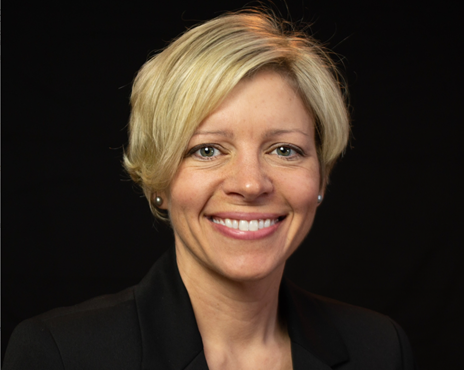
Tessa Carson is transitioning to the role of Executive Director of the Heart Care Institute “HCI” effective April 10th. Tessa will manage the Heart Care Institute’s clinical and business operations. She will have oversight over the HCI Cardiac Diagnostic Lab, HCI Cardiac Cath Lab, and HCI Cardiac Rehab and Wellness departments.
Tessa has been with the HCI Cardiac Rehab department for 15+ years and has played a key leadership role in the CR operations and staff management. She was instrumental in implementing the Pritikin intensive cardiac rehab program, starting the Cardiac Rehab Navigator program at Missouri Baptist, and overseeing large cardiac rehab capacity and volume expansion. She will be a great fit for the Heart Care Institute and a part of our Cardiology clinical operations team.
Tessa has a bachelors in Exercise Science from Truman State University and a Masters in Health Administration from Webster University.
Welcoming Dr. Shibali Das
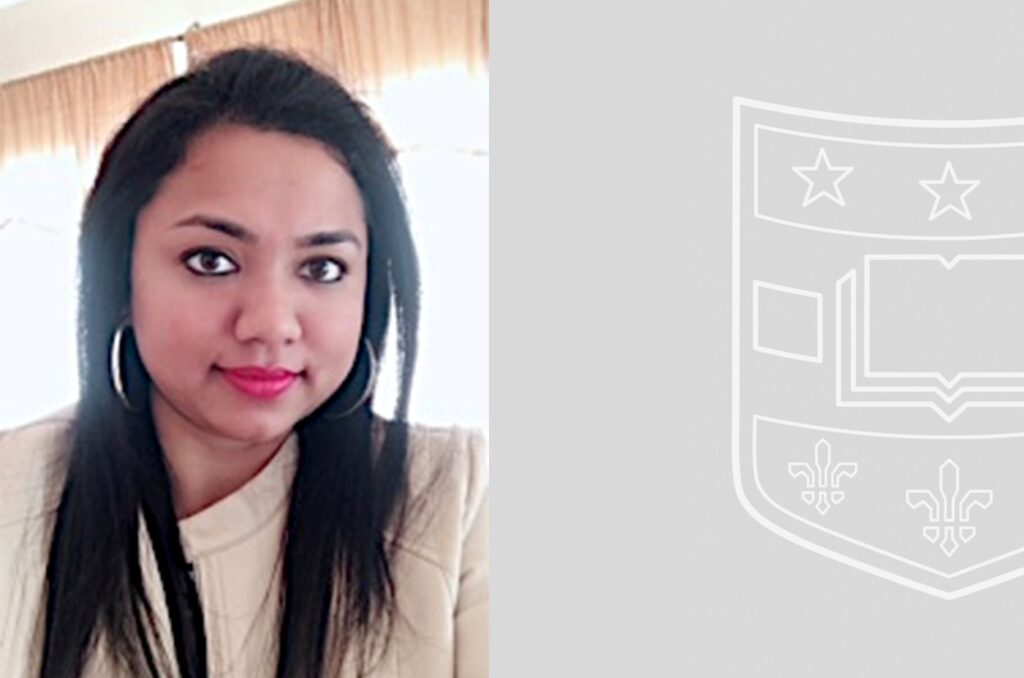
Dr. Shibali Das joined the Department of Medicine in the Cardiovascular Division as an instructor in February of 2023. She received her BSc and MSc degree in Microbiology from University of Calcutta Kolkata, India. She then pursued her doctoral degree in Bio-chemistry at Bose Institute, in collaboration with University of Calcutta. Her doctoral research focused on Immunotherapeutic approaches to tuberculosis including the development of novel immunomodulatory agents for therapy, elucidation of mechanisms of action of new therapeutic agents, mechanisms of immunosuppression during tuberculosis and regulation of host innate and adaptive immune response. She received her PhD degree from University of Calcutta in 2016 and then joined Dr. Shabaana Khader’s group in the Department of Molecular Microbiology, Washington University in St. Louis for Postdoctoral studies in 2016. In the Khader Lab, her work was focused on identifying new ways to target the lung to improve vaccine induced immunity against tuberculosis, studying early host-pathogen interaction using mouse, non-human primate and human.
In addition, Dr. Das research was also focused on testing different vaccines for efficacy studies. During her stay at Khader lab, she demonstrated critical role of Innate lymphoid cells in immunity to tuberculosis and also defined immune landscape that contributed to the disease outcome during tuberculosis. Her primary research interest will be to define immune mechanisms that contribute to the pathogenesis and progression of myocarditis and heart failure. Specifically, she is interested in studying the role of macrophage subsets in myocarditis and resultant heart failure, elucidating the role of trained immunity against Cardiac disease using cutting edge mice model and development of vaccine strategy against cardiac infections. Her key interests are innate and adaptive immunity, innate lymphoid cells, vaccine induced immunity, infectious diseases and cardiac disease. Her research areas are elucidating the mechanism that contribute to the pathogenesis and progression of myocarditis and heart failure and developing vaccination strategies to improve host immunity.
Meet Your Colleague

Kimberly Striler
Nurse Administrator
Fun Facts About Kimberly
How long in the division: 22 years!
Family: Married to Jim for 18 years with 2 sons, Jimmy 15 (16 next month yikes!), and Daniel 13
Hobby: We spend as much time as possible at The Lake of the Ozarks over the summer. I also enjoy watching my kids play sports, reading and just hanging out in our neighborhood, The Hill!
Favorite Food: Sushi, and anything from Carnivore
Nickname: Kim and Zuke (from my maiden name)
Bucket List: Travel! I want to take a cooking tour of Tuscany and explore the Amalfi coast. I would also love to take a Mediterranean cruise and visit as many cities in Europe as possible!
Health & Wellness
Sustainable Plant-Based Milks
Emma Greenhill, MS, RD, LDN
Mandeep Kaur, Dietetic Intern
We all are increasingly interested in decreasing our dietary intake of animal-based food products, due to health, sustainability, and ethical concerns. Therefore, the food industry is creating new products from plant-based ingredients that simulate many of the physicochemical and sensory attributes associated with animal-derived foods. One of the most common plant-based products that we can exchange in our daily diet is plant-based milk.
Production of plant-based milk. Generally, plant-based milks are prepared by crushing the plant material, followed by extraction of its soluble parts into water. The properties of the final product depend on the raw material and on the specifications of the homogenization, formulation, emulsification, and storage processes.
Technical processing. The process involves homogenization to improve stability. Then nutrition fortification to increase nutritional value of minerals (Ca, Mg, Fe and Zn) and vitamins (B12, B2, D and E). Also, extended mechanical and thermal pre-processing (e.g., roasting, dehulling, blanching, soaking, cooking, and sprouting) is also applied to mask off-flavor and improve mouthfeel/color. Lastly, fermentation can be applied to enhance important nutritional and/or sensory attributes. Lactic acid bacteria (LAB), bacilli and yeasts (e.g., Saccharomyces) are the most widely used microbes for plant-based fermentation.
Sustainability. But which plant-based milk is best for the environment? It depends on what measure you care most about: Water, land use, greenhouse gas emissions or all the climate-change factors combined. Soy milk requires the least water, three times less greenhouse gas emissions, and nine times less land use than cow’s milk requires.
Nutrition properties of plant-based milk (per 1 cup serving). The question then becomes do plant-based diets lack key micronutrients? Luckily, with the advancement in food science technology and nutrition knowledge many plant-based milks are becoming adequate or superior alternatives. Plant-based milks like almond, coconut, flaxseed, oat, rice, and soy milks are fortified so that they provide a near identical vitamin and mineral profile to cow’s milk.
- Almond milk: Calories range from 30 to 50 kcal. The carbohydrate ranges from 0 to 3 g. Protein ranges from 1 to 5 g. Calcium ranges between 22 and 495 mg. Almond milk tend to contain other vitamins as well.
- Soy milk: Calories range from 80 to 120 kcal. The carbohydrate ranges from 3 to 8 g. Protein ranges from 7 to 12 g. Fat ranges between 2.5 and 6 g.
- Rice milk: Calories range from 100 to 140 calories. The carbohydrate ranges between 23 to 27 g. Proteins and fats are present in small amounts.
- Coconut milk: Coconut milk is completely unique compared to other milks discussed because the majority of the calories, ranging between 45 and 60 kcal, come from saturated fats. It contains less than 0 g protein and total carbohydrate compared to 4 to 5 g of fat.
Pink Smoothie
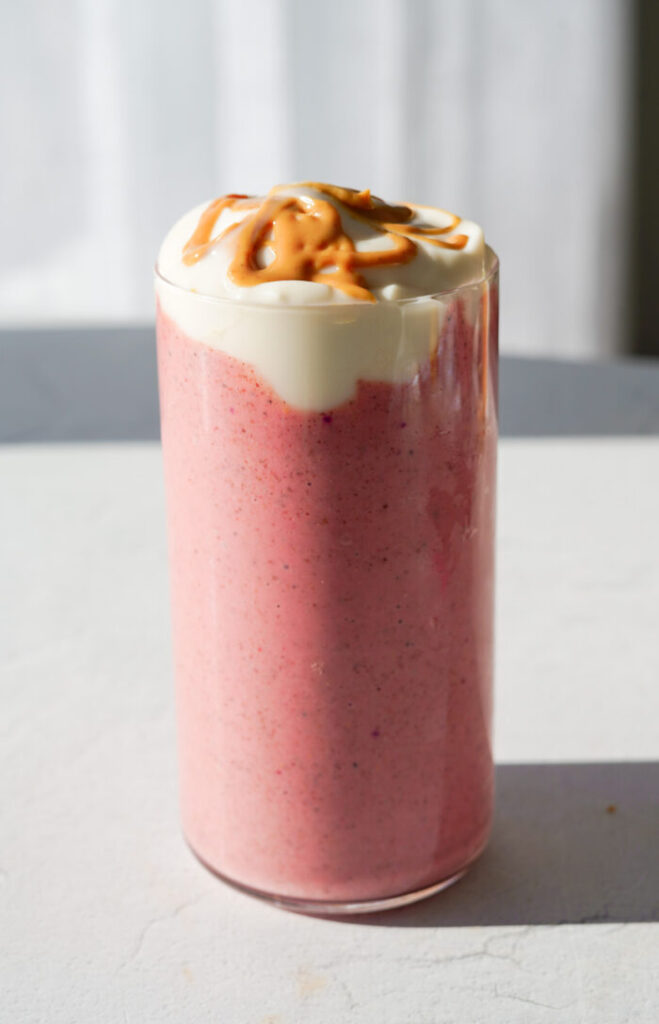
Serves: 1 • Prep Time: 5 minutes • Total Time: 5 minutes
A delicious, nutritious, and eye-catching smoothie recipe for those who love the color pink!
Ingredients
- 1 1/2 cups frozen strawberries
- 1/2 cup frozen mango or frozen banana
- 1 tsp hemp hearts
- 1 tsp flax seeds
- 1 tsp chia seeds
- 3/4 cup plant-based yogurt
- 3/4 cup plant-based milk
- Optional Toppings: more yogurt, sliced fruit, and/or peanut butter
Directions
- Combine all ingredients in a blender.
- Blend until smooth.
- Serve with extra yogurt, sliced fruit, or melted peanut butter on top, if desired.
Nutrition Facts:
Calories: 375.1kcal | Carbohydrates: 54.5g | Protein: 14.9g | Fat: 12.2g | Saturated Fat: 1.2g | Polyunsaturated Fat: 6.1g | Monounsaturated Fat: 1.6g | Trans Fat: 0.01g | Sodium: 115.2mg | Potassium: 759.3mg | Fiber: 9.4g | Sugar: 35.4g | Vitamin A: 1642.2IU | Vitamin C: 192.3mg | Calcium: 556mg | Iron: 3.1mg
More information at: https://plantyou.com/pink-smoothie-vegan-and-protein-pack
Do you have BJC Cigna? Remember that you have annual coverage to meet with me, Emma Greenhill, a Heart Care Institute dietitian. Call 314-996-8165 for more insurance information or to schedule an appointment.
Wash U Benefit: Online Learning
Online and on-demand learning solutions are designed with flexibility and convenience in mind, and to provide information and skills you need, when you need it most, and at your own pace. Human Resources works to embed these online learning tools into our overall learning framework to help employees and managers in their daily work and management of university operations.
Check out offerings here!
Spring Clean Your Finances
The use of subscription services has been on a meteoric rise. For many digital platforms, a monthly fee is the only way to consume content. These streaming service subscriptions, subscribe-and-save discounts, memberships and of-the-month clubs, coupled with the ease of automatic bill pay, can add up to a lot of recurring costs.
Savvy consumers should conduct periodic audits of automatic subscriptions by reviewing credit and debit card statements and bank accounts or use tools, like credit card services or mobile apps to monitor subscription services. Some credit cards offer helpful features such as requiring cardholder approval before subscriptions renew, but they may not catch a price increase or a free trial conversion to a monthly fee. Subscription manager apps can help you track and/or notify you, but require sensitive information and sometimes require a fee subscription themselves, all for a service you could do yourself.
Call to action
Take inventory of all the memberships and subscriptions you have. If you have memberships or subscriptions you aren’t using, cancel what you no longer want or need, and put that money toward debt reduction or a savings goal.
Additional learning
Check out the Money Matters toolkit for tips to take some of the stress and worry out of financial planning, offered by Work-Life Solutions.
IT Spotlight: Top Ten Social Engineering Techniques
There are as many ways to socially engineer or con people as there are people.
The unifying theme is that social engineering attackers use human nature to their advantage in any way they can. They prey on our trust, fear, curiosity, and desire to help others.
Fortunately, the main lines of attack fall into groups or themes, explored in a recent article by Carlos Salas.
- Baiting involves using a false promise to lure you into taking the bait and doing something you wouldn’t normally do. It could be as simple as leaving an infected USB memory stick somewhere, tempting people to see what’s on it or to use it, or trying to find some indication of who to return it to. Never try to check what’s on USB devices you find; instead, deliver them to the security team so we can use special equipment to check and clean them as needed. (We’ll give them back if we can’t find the owner and can ensure they are safe.)
- Pretexting is when a fictional scenario (a pretext) is used to convince you to disclose sensitive information. For example, it could be personal information about yourself or other employees. With tax season in full swing, tax information is a common target.
- Watering holes infect an existing website or create a fake one that mimics an existing website. Attackers convince users that using these watering holes is safe, allowing them to infect targeted computers and gain access to everything on that computer and possibly the target’s work network.
- Quid pro quo takes advantage of people’s desire to play fair and reciprocate the kind behaviors of others. Attackers offer to help but to do so, they need a little information. For example, a supposed IT expert might need your login credentials to make your computer run faster.
- Scareware incorporates a sense of urgency. Many of us have seen pop-up warnings that your computer has a virus or has out-of-date software. All you need to do is click the link to buy some worthless or malicious “antivirus” software. Use an ad-blocker and reputable antivirus program, and avoid clicking on pop-ups.
- Tailgating and piggybacking are ways attackers gain access to secure or restricted areas. For instance, someone might try to tailgate you into your office or apartment building. One trick is to have both hands full with packages or coffee cups to encourage you to help with the door. In this case, you could offer to hold their packages while they get out their ID card.
- Vishing – or ‘voice phishing’ is the phone call version of an email phishing attack. The malicious actor tries to elicit information or influence someone by telephone. Avoid responding to emails or social media messages that ask for your phone number. Remember that your friends and colleagues will never call you at home asking you to transfer funds or any other sensitive information.
- Shoulder surfing happens when someone looks over your shoulder to see confidential information or watch you enter your password. Automatic Teller Machine (ATM) card skimmers can be placed over the slot for your card, capture its data as it is inserted, and video record the entry of your PIN. This allows the bad actor to clone your card and withdraw your cash using your PIN. The solution is to shield the entry of your PIN and watch for add-ons to ATMs.
- Dumpster diving can happen when you don’t shred your confidential documents before disposing of them. The social engineer can go through your trash and acquire confidential information that allows them to impersonate you with your bank and other vendors or even steal your identity.
- Deep fakes have been in the press recently. ChatGPT and other “artificial intelligences” make it relatively easy to fake the voice or video of people. This means that extra steps need to be taken to avoid falling prey to them. The easiest is to call the person back on a phone number you know to be the right one for them, just to verify the call’s authenticity. Another is to ask questions about family and personal life that require more and deeper knowledge to answer. If there are unusual delays in responding, that’s a good reason to be suspicious.
What Can You Do?
Now that you know more about these common avenues of attack, I will return to my usual message of encouraging you to be vigilant, skeptical, and a little paranoid. But now you are equipped with more information about the different ways malicious actors will try to take advantage of you.
Please also help your friends and family be wiser about these cons. If you’re reading these articles, you are more expert than most people you know!
Good luck and be careful out there!
| Keep up to date with IT news at the Office of Information Security blog |
Follow the Cardiovascular Division on Twitter!
Check out our division account, @WashUCardiology! We will be sharing division accomplishments, announcements, news, events, and more. If you have a story about the cardiovascular division that you think deserves a social media spotlight, email bolhafner@wustl.edu.